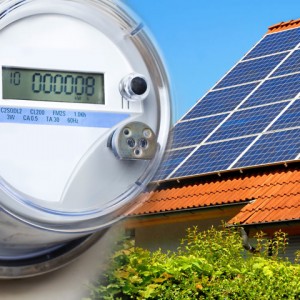Victoria’s regulator introduces time-varying solar feed in tariff for Vic
The Essential Services Commission of Victoria has provided the final details of its first ever time varying solar feed in tariff (FiT) that will take effect from July 1, 2018, and thereafter become compulsory.
The shift from the conventional flat Feed-in to a time-varying solar feed in tariff is one-of-a-kind in Australia, having been proposed by the ESC after much pressure from the Labor state government to find a “fair price” for solar energy exported back to the grid from the massive 1GW generated from rooftop solar installed on homes and businesses.
The new rates could be published in the ESC’s draft report in December this year.
According to the draft, retailers will be required to pay a minimum rate of 29c/kWh to those exporting their solar feed in tariff excess energy between 3pm and 9pm, a minimum amount of 10.3c/kWh for energy fed into the grid via solar feed in tariff between 7am and 3pm, and a minimum rate of 7.1c/kWh (previously paid 7.2c) just in case someone exports between 10pm and 7am.
Retailers will also be allowed to use the time-varying tariffs voluntarily for just one year. The ESC may consider extending the period in case it receives opposition from energy companies like Energy Australia.
For now, an alternative flat rate of 9.9c/kWh will be paid for the next one year.
Solar advocates have voiced concerns about this lower price (down 1.4c/kWh) from the previous flat rate, especially at a time when wholesale prices have shot, although energy retailers insist it is still very high.
ESC has tried to justify the lower cost for the flat rate citing it modeled it from ACIL Allen which noted that generally, the any-time price of power has fallen while the evening price had increased.
Ideally, the uptake of more solar panels is expected to drop the day time prices even further.
In their report, the ESC hopes that the time-varying solar feed in tariff will be a good incentive to inspire households to either operate their load (such as washing machines, pool pumps etc.), orient their solar panels to the west instead of the north (in order to generate more later in the day), or install battery storage.
The ESC is also eyeing the possibility of imposing “critical peak tariffs” which could lead to higher payments when wholesale prices shoot above $300/MWh and eventually surge to the market cap of 142c/kWh or $14,200/MWh.
However, owing to the solar feed in tariff’s complexity, and considering that it has to be done retrospectively, this feature may not be introduced at least until 2019/20.
Another reason why the Victoria solar feed in tariff is distinct is because it is the only state-based FiT that explicitly includes the “social cost” of carbon at 2.5c/kWh.
In its final report, the ESC remarked that some parties such as consumers groups, retailer Powershop and the Alternative Technology Association were concerned about the possibility of some consumers powering up their batteries at night and then “exporting” the electricity to the grid during the evening peak.
The biggest problem in this case is that they would effectively export stored coal power to the grid, and gain a tariff that includes the social cost of carbon. “That would be a perverse outcome,” the ATA noted.
In response, the ESC said the concerns would play a more relevant role in subsequent FiT (solar feed in tariff) setting processes than in the current one. However, it would review them.
“The scenario depicted above is unlikely to emerge to any material degree due to the low penetration of batteries,” it said.
“We recognise the issue raised by stakeholders and will continue to work with the relevant government agencies on the appropriate FiT (solar feed in tariff) arrangements.”

